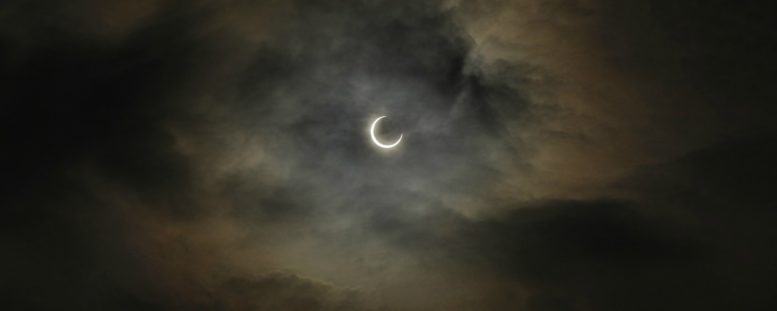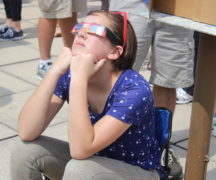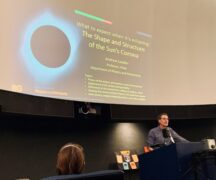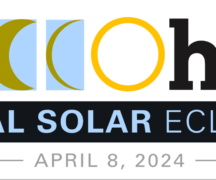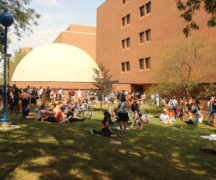BGSU OFFICE OF MARKETING & COMMUNICATIONS
The first day of fall classes at Bowling Green State University will feature an event that doesn’t happen often—a solar eclipse, when the moon passes between the Earth and the sun, obscuring the image of the sun for viewers on Earth.
The BGSU Planetarium has several activities planned Aug. 21 to celebrate and acknowledge this rare occurrence. While the eclipse’s path for totality is a 70-mile swath from Oregon to South Carolina, northwest Ohio will see the eclipse at about 80 percent of totality, explained Dr. Dale Smith, professor of astronomy and director of the BGSU Planetarium.
From about 1 to 3:30 p.m., weather permitting, the planetarium’s rooftop observation deck will be open for visitors to view the eclipse from telescopes equipped with safe-visual filters. Visitors should come to the planetarium lobby for escort to the observatory.
To accommodate an expected large turnout, Smith has ordered special glasses for safe viewing of the eclipse that will be available for guests who want to watch from the lawn outside the planetarium. The public is reminded that proper eye protection is necessary when viewing a partial solar eclipse. Looking directly at the sun, even during an eclipse, can cause serious eye damage.
Additionally, there will be a live webcast of the eclipse as it crosses the country shown inside the planetarium. The webcast will be held regardless of the local weather conditions.
The BGSU Planetarium is located in the Physical Sciences Laboratory Building, southeast of the corner of Merry Avenue and North College Drive.
The next total eclipse visible in the U.S. will be in 2024.

